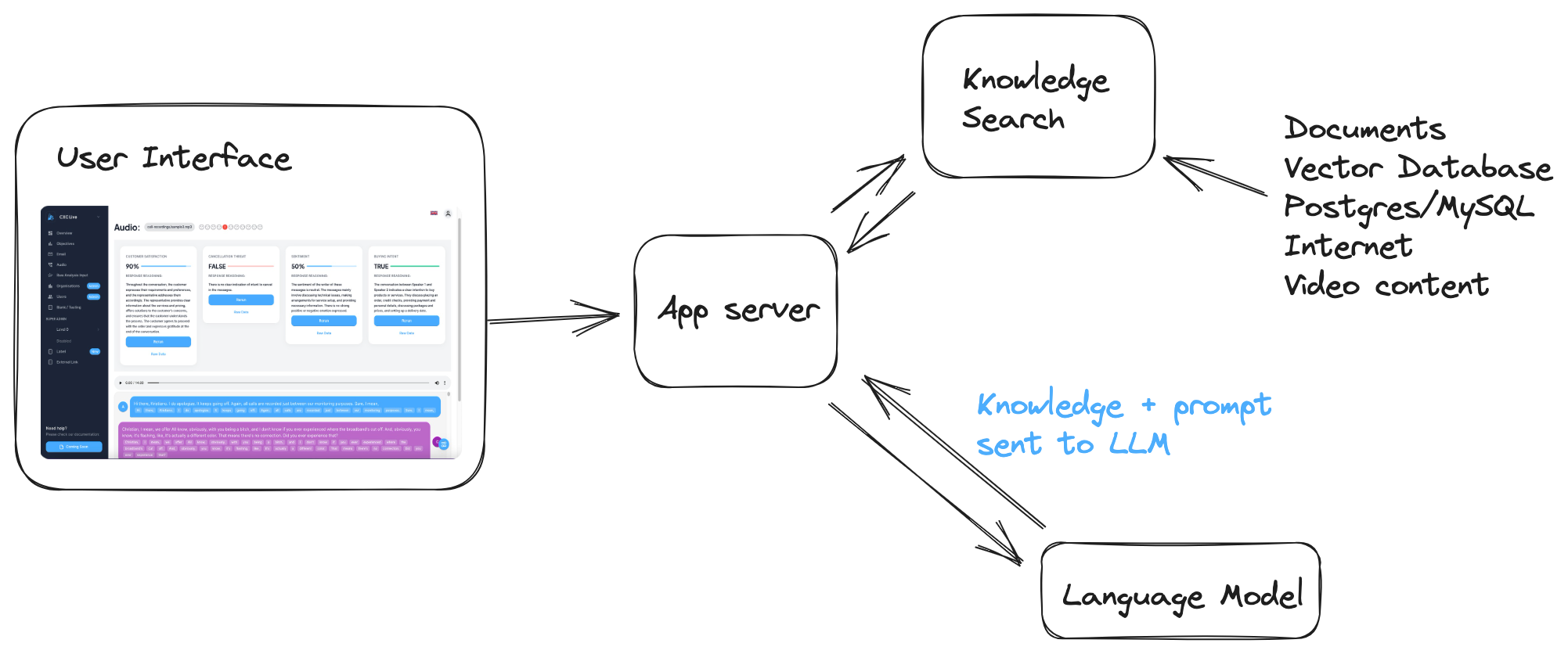Introduction
As businesses increasingly migrate their operations online, customer service quality can make or break the customer experience. Companies have long used chatbots to automate their customer service channels, offering instant responses to customer queries. However, traditional chatbots often fall short when dealing with nuanced or complex issues. Enter the next generation of customer service agents—AI agents backed by RAG & vector databases. In this article, we will explore how these sophisticated agents offer a more dynamic, accurate, and efficient customer service experience compared to their traditional counterparts.
The Limitations of Traditional Chatbots
Before delving into the advanced features of AI agents, it's crucial to understand the shortcomings of traditional chatbots. These often include:
- Limited Understanding of Context: Traditional chatbots work by identifying keywords and generating predefined responses. They struggle to understand context or follow a conversation flow.
- Low Adaptability: They can't easily adapt to new products, services, or customer queries, requiring manual reprogramming for updates.
- High Maintenance: They require a great deal of time and effort to set up, adjust and maintain because all possible questions and requirements need to be pre loaded manually.
- Frustrating User Experience: Customers often find themselves stuck in endless loops, repeating information and ultimately requiring human intervention.
The Labor-Intensive Nature of Setting Up and Maintaining Traditional Chatbots
While traditional chatbots offer the advantage of automating basic customer service tasks, their setup and ongoing maintenance are far from hands-off, often requiring a substantial investment of time, effort, and resources.
Initial Setup
- Scripting Conversations: Crafting the dialogue flow requires meticulous planning. Each potential customer question needs a predefined response, and the logic tree can become complex very quickly.
- Integrations: Traditional chatbots often need to be integrated with existing systems like CRM software, databases, and payment gateways. This step can be complicated and time-consuming.
- User Interface: Building a user-friendly interface requires significant effort, especially if the chatbot is intended for multiple platforms (web, mobile apps, social media, etc.)
Ongoing Maintenance
- Regular Updates: As the business evolves, so do its products, policies, and customer queries. Keeping the chatbot up-to-date with these changes requires frequent manual intervention.
- Monitoring & Quality Control: The effectiveness of a chatbot has to be continuously monitored to identify and correct errors or misunderstandings in the dialogue flow.
- User Feedback: Gathering, analysing, and implementing changes based on user feedback is an ongoing process that requires labor-intensive data analysis.
- Technological Updates: As technology changes, the chatbot may need to be reprogrammed or re-integrated with new systems, which again requires manual effort.
- Fallback to Human Agents: In scenarios where the chatbot cannot address a query, a seamless handoff to human agents needs to be maintained, and this transition often has to be managed and updated frequently to ensure it meets customer expectations.
All these tasks necessitate the involvement of various professionals, from software developers and data analysts to customer service experts, making the process labor-intensive and often costly. In contrast, AI agents powered by vector databases can adapt and learn in real-time, significantly reducing the need for ongoing manual updates and monitoring.
What is Retrieval-Augmented Generation ?
Retrieval-Augmented Generation is an advanced technique in natural language processing that combines the best of both worlds: retrieval-based and generative methods. In traditional retrieval-based systems, the model searches for the best possible response from a predefined database. Generative models, on the other hand, generate responses from scratch based on the context.
In a RAG model, the system first retrieves relevant pieces of information (documents, passages, or sentences) from a large corpus, or knowledge base and then uses that retrieved data to generate a well-informed, coherent, and contextually appropriate response. This two-step approach allows RAG models to create more nuanced and informative answers than either retrieval-based or generative models could do on their own.

Advantages of Retrieval-Augmented Generation
- Quality of Information: By retrieving from a well-curated database or corpus, RAG models ensure that the information they incorporate into their generated text is accurate and reliable.
- Contextual Relevance: The generative aspect allows RAG to craft responses that are not just accurate but also tailored to the specific query or context, resulting in more satisfying user interactions.
- Scalability: RAG models can easily scale to accommodate larger databases or more complex questions, offering a future-proof solution for various applications.
- Flexibility: They can be applied across various domains and use-cases, from customer service and recommendation systems to automated content creation and beyond.
- Reduced Labor Intensity: Unlike traditional chatbots, which require manual efforts for updates and handling edge cases, RAG models adapt more seamlessly to new information. They can learn from user interactions and update their knowledge base accordingly.
- Increased Efficiency: RAG models provide quick and precise answers, making them highly efficient for tasks that require an immediate and accurate response.
- Reduced Redundancy: Traditional systems may require the same information to be stored multiple times for different queries or contexts. RAG models can dynamically generate context-appropriate responses based on the same retrieved information, making better use of the data storage.
- Higher User Satisfaction: By generating more accurate, relevant, and detailed responses, RAG models often result in a better overall user experience compared to traditional methods.
Retrieval-Augmented Generation offers a balanced and effective approach to natural language understanding and generation. By leveraging both retrieval and generative capabilities, RAG models provide a more nuanced, accurate, and contextually relevant output. This makes them a strong choice for any application that requires a deep understanding of natural language, from automated customer service systems to sophisticated conversational agents.
How Vector databases are a crucial element of RAG model AI agents
Vector databases work by converting each piece of data—be it text, images, or other forms of content—into vectors in a multidimensional space. These vectors capture the 'essence' of the data, allowing for incredibly fast and accurate searches and comparisons.
The Role of Vector Databases
Using vector databases, AI agents can:
- Understand Context: Unlike keyword-based chatbots, these agents can comprehend and process context. They understand customer queries in a conversational manner, leading to more precise responses.
- Real-time Learning: These agents learn from each interaction. A vector database's ability to organise information efficiently allows the AI agent to incorporate real-time data into its decision-making process.
- Quick Adaptability: The database makes it easy for the AI agent to adapt to new products or updates, as the system can reorganise itself without human intervention.
- Reduced Error Rate: Vector databases facilitate a more accurate match between a user query and the AI agent's response, substantially reducing errors and misunderstandings.
- Personalised Service: The AI can access customer data from previous interactions stored in the vector database to provide personalised recommendations and solutions.
Comparative Analysis: RAG model Agents vs. Traditional ChatbotsCase Studies

Several companies have already made the shift from traditional chatbots to AI agents powered by RAG & vector databases. One notable example is a major e-commerce platform that reported a 40% increase in customer satisfaction and a 25% reduction in human agent involvement within just three months of implementation.
Ethical Considerations
While the use of AI and vector databases in customer service offers numerous benefits, it also raises ethical questions around data privacy. Companies must take adequate measures to secure customer data and comply with data protection regulations. Anonymisation of the customer interactions can be achieved prior to submission into the large language model (LLM) and it is now also possible implement private LLMs where personal data is secured within the private network.
Conclusion
AI agents backed by RAG & vector databases mark a transformative moment in the realm of customer service. Their ability to understand context, learn in real-time, adapt quickly, and reduce errors positions them head and shoulders above traditional chatbots. As businesses continue to prioritise customer service, adopting these advanced agents seems less like an option and more like a necessity.
By embracing this next generation of AI agents, companies are not only enhancing the quality of their customer service but also setting themselves up for success in an increasingly competitive digital landscape.
Frequently Asked Questions about RAG AI agents
How can I implement it?
Services such as CXCortex from Hostcomm aggregate email, text messages and call recordings into a vector database. The vector database grows and improves with every customer service interaction and can ‘augmented’ with a language chain using something such as OpenAI GPT. By giving the system a chat interface it can provide accurate and self-learning customer service.
Can it provide personalised assistance?
Yes, they are powered by a database and can connect to any other system using APIs. This means unlimited tasks can be completed with no or very little maintenance.
Is it self-learning?
It generates a response from a database which is automatically updated by customer service interactions so in a sense yes, it will automatically provide better and better customer service responses without manual adjustments and additions that are typically necessary in traditional chatbots.
Is it expensive?
It is actually cheaper than using AI / LLMs in the normal way because the customer service interaction ‘chunks’ are stored in a vector database where the retrieval cost is negligible. Each interaction needs to be analysed by a language model and the costs for this vary considerably but are minimal in the case of Open AI GPT, Anthropic and Azure AI.
Does it improve Customer Experience (CX)?
Yes absolutely. All customer interactions are analysed and stored and can be used for performance management purposes as well as to generate automated customer service responses. The system works in real time so CX analytics can be performed to ensure customers are experiencing a great level of service all of the time.
What are the top 3 benefits of RAG AI agents?
- They can self-improve automatically which resolves the single biggest flaw with traditional chatbots.
- They are more accurate and cannot be ‘stumped’ by context or a badly matching intent phrases.
- They result in a better user experience and are much more natural.
More information about RAG: https://research.ibm.com/blog/...
For more information on Hostcomm's CXCortex AI analytics and response service, which uses a RAG model please visit: https://www.hostcomm.co.uk/sol...














